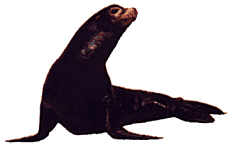

Goals:
2.Ý Students will work effectively with other students.
3.Ý Students will learn the importance of following directions.
4.Ý Students will improve their communication skills.
Materials:
Information on coral reefs and possible detailed pictures. For example: World Book Encyclopedia or National Geographic Magazines dealing with coral reefs, and Internet resources such as http://www.dc.peachnet.edu/~pgore/students/f95/starmoss/coral.htm
Basic computer data bases or Internet access
Multiple copies of basic organisms that live on coral reefs
Tourist information about different resorts or coral reef experiences.
Time:
Materials:
Glue
A piece of poster board or paper for each group
Magazines (National Geographic, Time, Newsweek, etc.)
Procedure:
2.Ý The teacher will then pass out old magazines that the students can use to find pictures relating to coral reefs. The teacher should emphasize that the pictures do not have to be pictures of coral reefs. Encourage the students to use their imagination when choosing pictures.
3.Ý The students will make a collage from the pictures that they found. The students will then present a short 2-3 minute information session to the rest of the class as to why they chose the pictures that they did.
Materials:
Copies of organisms that appear on the coral reef
Dichotomous key to identify the organisms
Procedure:
2.Ý The teacher should demonstrate to the students how the key works through an example of her own.
3.Ý Divide the students into groups of about four students and have them cut out the pictures of the organism provided. Divide the pictures so that each student gets at least one. This allows one student to read from the key.
4.Ý One student will then pick an organism from the pictures that they have. The student with the key will then read off the descriptions starting at the number one on the key. All the group members must decide on the characteristics of the organism before moving on the the next clue.
5.Ý When the name is found, the person will write the name of that organism on the picture and the students will proceed to the next picture.
6.Ý Wrap this activity up by asking the question, what could have you looked at if you had been able to have the organism in front of you to make this discussion more in-depth?
Materials:
Construction paper, scissors, colors, markers, etc.
Procedure:
2.Ý Divide the students into two groups. Have half of the students take the role of tour companies trying to sell a package deal to explore a reef. The other half of the students will be the tour guides trying to find a deal for a high school band who wants to explore reefs on their performing tour.
3.Ý The tour companies will create props and slogans to attract the guides to buy their tour package. The tour guides must work on their dealing skills with each other trying to get the best price possible for this high school band.
4.Ý Once the props and slogans are complete, the shopping begins. The tour guides will deal with the different tour companies to find the best possible deal. Once they have found a good tour, the guides will purchase it for the band. At the end when all the guides have purchased from a company, a discussion will be held to see what tour each guide chose and how much they paid for it. An interesting fact might be to see which company the tour guides chose the most.
Assessment:
2.Ý Each group will turn in their collage that they created in class. (Criteria for success = Students will receive 5 points for handing this in).
3.Ý Each group must submit an evaluation of the contribution of every member of the group. (Criteria for success = Each member must have made a substantial contribution to the team). May want to create a rubric for this assessment.
Curricular Strands and Major Concepts:
2.Ý Science - Students are learning a method which scientists use to classify organisms. Also, they are learning the names of different organisms that live on coral reefs.
3.Ý Math - Through the steps in phase three, students learn how to make a choice based on the price of an item.
4.Ý Social Studies - Students explore different areas of the reef regions around the world through the information found on the Internet.
Possible Extensions:
2.Ý Have a marine biologist come in and do a presentation on the organisms studied in this lesson.
3.Ý Have the students explore the job of a travel agent.
Resource:
Return to Table of Contents
Coral Reefs - developed by Kristen Treadway, Jenny Mavis, T. J. Beck, & Jim O'Keefe
This page submitted by the St.
Norbert College Ocean Voyager Program
Ý